Menu

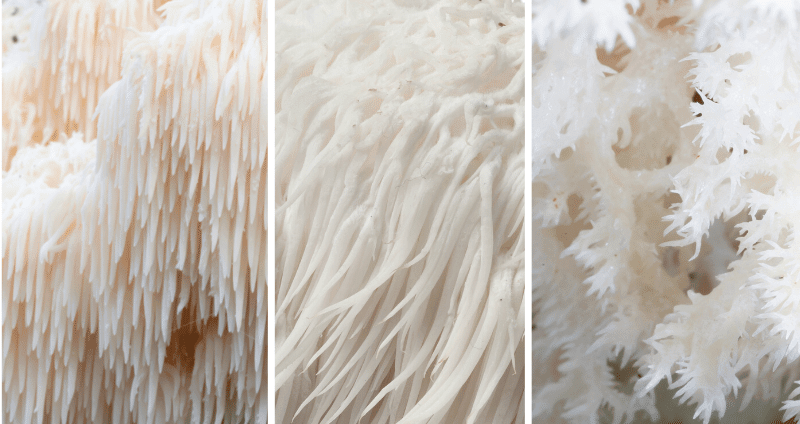
Did you know that the scientific name of the lion’s mane mushroom, Hericium erinaceus, literally translates to hedgehog in Latin?
This is because it’s thought to look like a faceless hedgehog.
Perhaps you might think this mushroom looks more like a lion’s mane, as it’s commonly referred to. Or do you think it looks more like a beard or a monkey head, which are all synonymous with Hericium erinaceus?
If you’re wondering, “Is there a wild poisonous lion’s mane mushroom?” Today, we’ll answer your question, delve deeper into the unique characteristics of lion’s mane, and explain how there’s more to this fungi than the brain-supporting properties it’s known for. We’ll also explore:
As mentioned earlier, Hericium means hedgehog in Latin. Hericium species, including the lion’s mane, have icicle-like structures resembling a hedgehog’s spines, making them easy to misidentify.
Other Hericium mushrooms in the Hericium genus include:
The bear’s head tooth fungus grows on living or dead hardwood species and softwood trees as well.
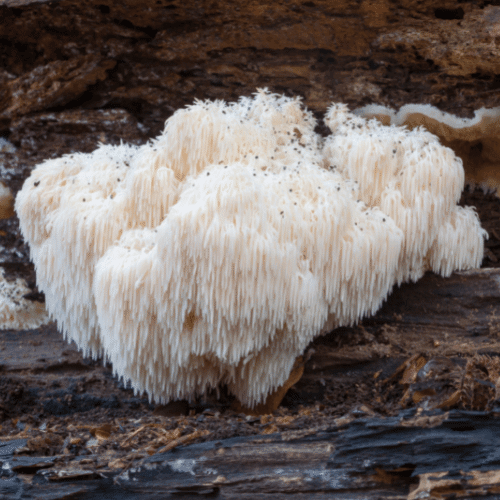
This mushroom is also known as the coral tooth fungus and resembles a branched hard coral—hence the name.
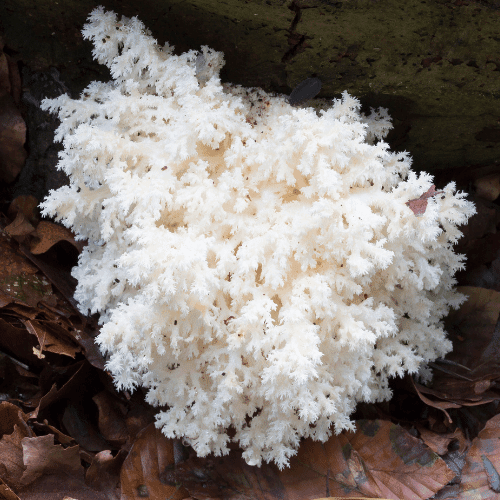
Now that we’ve learned about the two lion’s mane mushroom lookalikes, let’s explore proper identification techniques for lion’s mane and what distinguishes it from these doppelgangers.
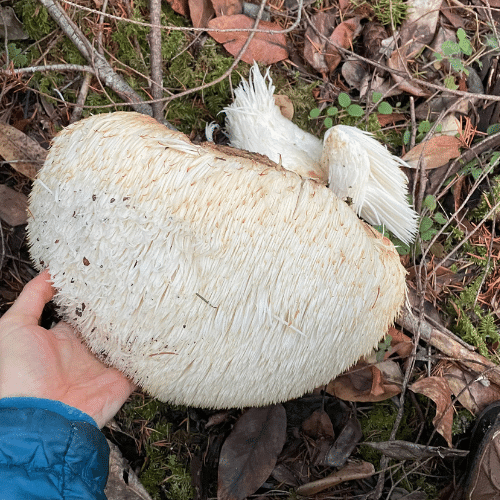
The lion’s mane mushroom grows on decaying or live deciduous and hardwood trees and can also be found on beech and oak trees. It appears widely throughout North America, Canada, Europe, and Asia.
You can find lion’s mane mushrooms on fallen logs—including dying hardwood trees—or much higher on a living tree’s trunk. It's a cool-weather mushroom and can be found in late summer and fall in North America or in winter and spring in warmer climates.
This Hericium species has the following characteristics:
When harvesting Lion’s Mane, look for these characteristics: It grows on hardwood trees and has a round mass of icicle-like spines.
Let’s now look at how all the other common names for H. eracineus describe its features.
If you’re foraging Lion’s Mane, its key identifying feature is its snowball-like shape, from which the spines emanate.
Both H. americanum and H. coralloides spines grow from branches that emerge from the stem or other branches. But, H. erinaceus doesn't branch and its spines hang from a central stalk.
The following table highlights the differences between a lion’s mane mushroom and its lookalikes to help you differentiate between them when mushroom foraging.
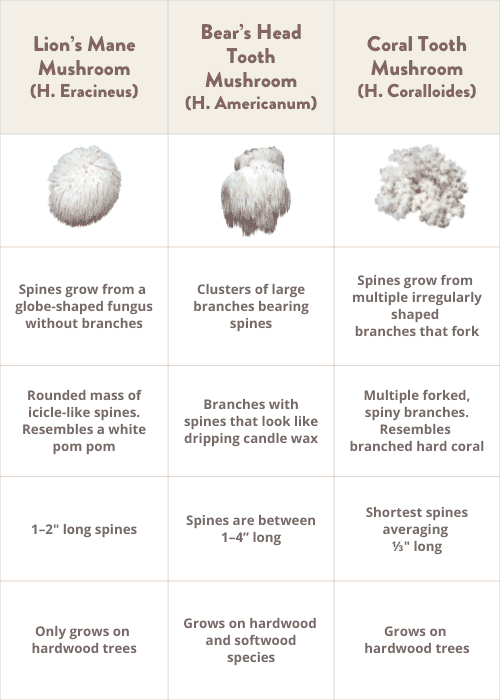
Expert tip: Though the genus name Hericium means hedgehog in Latin, only lion’s mane (H.erinaceus) is referred to as hedgehog mushrooms.
Note: There's a completely separate mushroom known as the hedgehog mushroom that has a cap-and-stem mushroom shape with “teeth” instead of gills on its underside. However, this mushroom isn't in the same family as the Hericium. It belongs to the Hydnaceae family instead. As a cousin of chanterelle mushrooms, it is likewise a delicious edible mushroom.
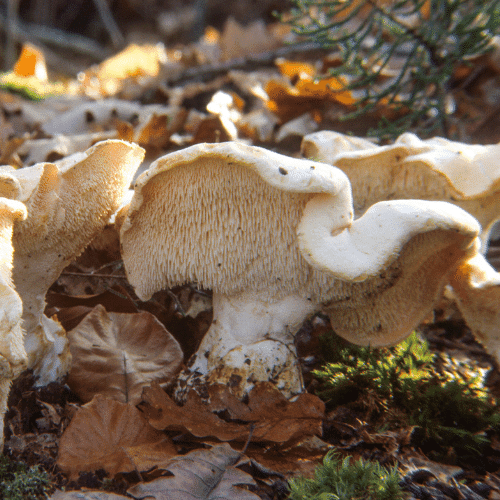
Fortunately, none of the lion’s mane mushrooms lookalikes are poisonous.
These three species in the Hericium genus are edible and can be used for culinary purposes.
Lion’s mane mushrooms are not only delicious but also have a rich nutritional profile, which makes them an ideal culinary mushroom.
Most people claim they have an earthy taste with a hint of seafood flavor, but apart from taste, what really matters is their nutritional value.
Like the other culinary functional mushrooms, such as shiitake and maitake, lion’s mane is an ideal source of protein, fiber, and other nutrients essential for a healthy diet [1].
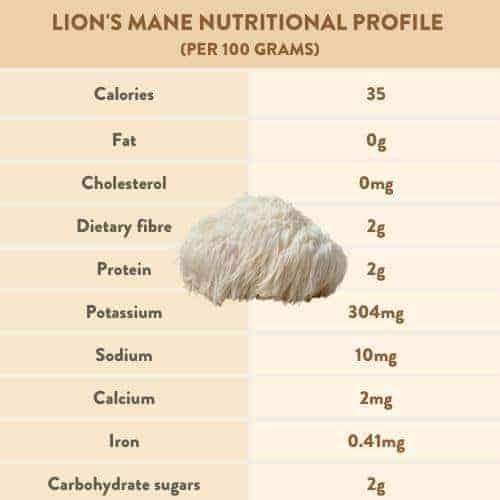
Comparative to lion’s mane mushroom (H. erinaceus), there is little research on the nutritional and functional properties of its lookalikes, H. coralloides and H. americanum. One exception concerns the antioxidant properties of these mushrooms. There is more than one study that confirms the high antioxidant content of H. coralloides and H. americanum [5,6]. In fact, one study found that H. coralloides has even higher levels of antioxidants than lion’s mane.
However, lion’s mane mushroom is a mushroom that has been extensively cultivated, so it is the Hericium mushroom that you can find and buy most easily. Take advantage of the accessibility of lion’s mane to tap into this rich source of antioxidants and nutrients.
Hericium mushrooms also contain compounds known as hericenones and erinacines [2]. The lion’s mane mushroom has been used extensively to study these compounds.
Studied effects of hericenones and erinacines:
So, are these lion’s mane mushroom benefits from the hericenones and erinacines interchangeable with the other mushrooms in the Hericium genus? There is very little research yet to guarantee that this is true.
However, one study identified compounds unique to H. coralloides that appear to have qualities that induce nerve growth and brain-derived neurotrophic factor [4]. The compounds in lion’s mane are similar and induce the same kinds of effects. Both these mushrooms’ compounds have implications for supporting brain and nervous system health. The study’s findings further support Hericium as a mushroom genus with brain-boosting properties.
Fortunately, foraging is not the only way to get fresh lion’s mane mushrooms because they are sold in grocery stores and farmers’ markets. You, however, have to ensure you buy organic mushrooms.
Mushrooms are very absorbent and will soak in pesticides and pollutants when grown inorganically. These chemicals are almost impossible to wash off once absorbed by the fungus, and you might end up ingesting them in your cooked lion’s mane mushrooms.
To ensure you buy organic fresh lion’s mane mushrooms, check food markets that sell organic foods.
If you’re in the United States, ensure that the mushroom packaging has an organic seal from the United States Department of Agriculture (USDA). This proves that the mushrooms are organically farmed, have passed inspection, and were grown using natural processes.
If you can’t find fresh lion’s mane from grocery stores in your area, consider growing your own. You can easily order lion’s mane mushroom growing kits online.
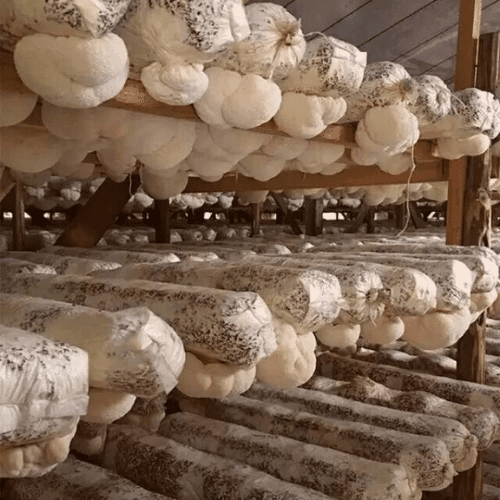
While adding fresh mushrooms to your diet is a good way to get their nutritional benefits, you won’t get all of the lion’s mane mushroom health benefits this way. Your body can’t absorb most of the active compounds from the cooked mushrooms.
Active compounds such as hericenones, erinacines, and beta-glucans are responsible for most of the lion’s mane mushroom health benefits, like its brain-boosting traits.
These compounds must be extracted using specific mushroom extraction processes suitable for lion’s mane.
Extract powders have a higher bioavailability of active compounds, which means your body gets all the benefits of these functional mushrooms.
However, you should exercise extra caution when buying a lion’s mane supplement since not all supplements are equal.
Some are made from non-organic mushrooms, while others are made from mycelium (the “root system” of the mushroom). Using a mycelium-based supplement means you get more starch than health-benefiting compounds.
Consider the following while picking a lion’s mane supplement for the first time:
This buying guide for lion's mane mushroom powder extracts provides more details on why each of the above factors is crucial. Following it will ensure you get a lion's mane powder extract that has the beneficial compounds you require to reap the lion's mane's broader health advantages.
Real Mushrooms provides Organic Lion’s Mane Extracts in powder and capsule form, from 100% real mushrooms (fruiting bodies).
After harvesting lion's mane, we use the hot water extraction method to ensure our supplements have a high beta-glucan content of more than 25%. Beta-glucans are the primary compounds in mushrooms that account for most of their health benefits.
These qualities make our supplements the best on the market and efficient in boosting overall brain power, mental focus, and clarity.
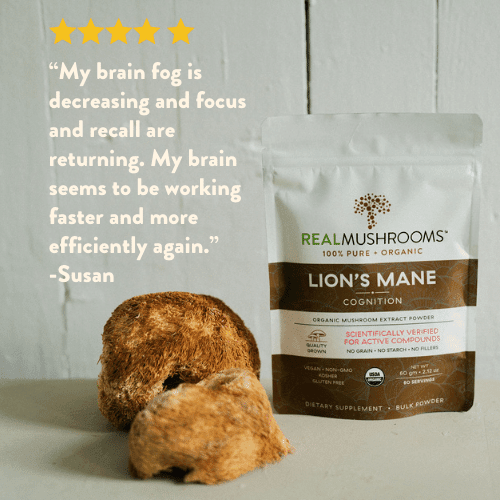
Order your first bottle of the Organic Lion’s Mane Extract Capsules and enhance your brain power and memory.

Disclaimer: The information or products mentioned in this article are provided as information resources only, and are not to be used or relied on to diagnose, treat, cure, or prevent any disease. This information does not create any patient-doctor relationship, and should not be used as a substitute for professional diagnosis and treatment. The information is intended for health care professionals only. The statements made in this article have not been evaluated by the Food and Drug Administration. Any products mentioned are not intended to diagnose, treat, cure, or prevent any disease. The information in this article is intended for educational purposes. The information is not intended to replace medical advice offered by licensed medical physicians. Please consult your doctor or health practitioner for any medical advice.